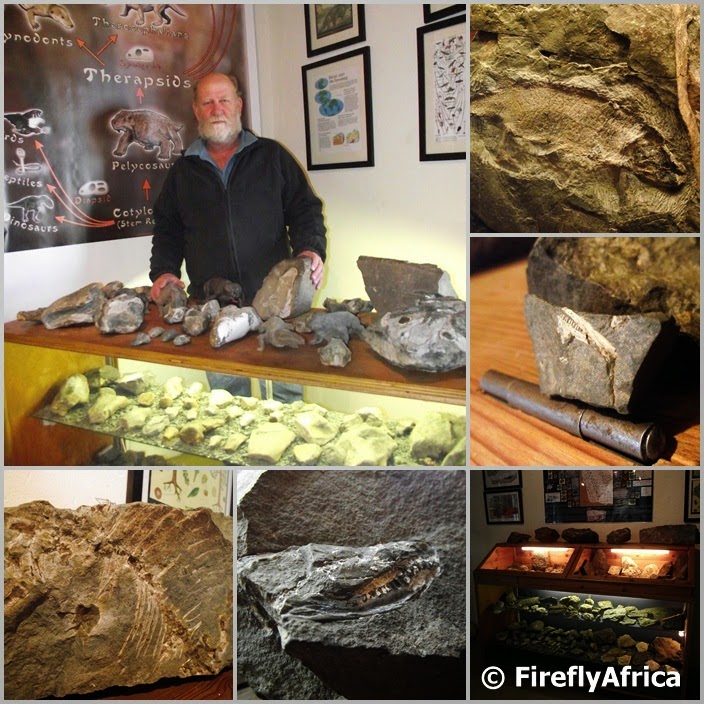When I grew up I wanted to be an archaeologist. Somebody like Indiana Jones who discover lost cities and artifacts, dig up dinosaurs and made remarkable finds that would wow the world. That dream kinda shattered when I found it it wasn’t all quite as adventurous and glamorous. Instead I went into tourism although the interest for archaeology is still there. This interest truly got fed when I spent a night at Ganora Guestfarm out Nieu-Bethesda recently.
In prehistoric times the Karoo was a huge inland swamp (and not a sea as some people claim) and 253 million years ago, during the Permian Period, the area around the present day Nieu-Bethesda was covered by big meandering rivers which flowed in a northerly direction. The floodplains around these rivers teemed with prehistoric animals which died along the banks of the rivers, was covered with mud and got preserved as fossils. This period was 50 million years before the first dinosaurs so the fossils in the Karoo pre-dates things like the famous T-Rex, Triceratops and Brachiosaurus. One of the best places to go and see and learn about these fossils is Ganora Guestfarm and there is no better person to show you around than owner JP Steynberg.
When the Steybergs bought the farm in the 1990’s they had no idea it contained a treasure trove of fossils and San (Bushmen) artifacts. This they only discovered on a picnic in a riverbed on the farm a few months later. That was the start of it and the rest, as they say, is history. In 1998 they registered their private museum and today has one of the biggest private fossil and artifact collections in South Africa. JP showed me around the museum and I literally didn’t know where to look. The collection truly is magnificent. The fossils in the exhibit are on average about 280 million years old and comes from a time when mammal-like-reptiles roamed the earth. As I said, from a pre-dinosaur time. The collection also includes small models to give an indication of what these animals looked like, fossilised leaves from the Glossopteris trees and the Compasia dela Harpi fish fossil of which they have the only complete example of in the world. JP’s passion for and knowledge of fossils comes through as soon as he starts talking and I was immediately sorry that I wouldn’t have time to go out onto the farm with him to see fossils in their “natural” environment.
Next JP took me into the next room where the Bushman artifacts are on display. Like the fossil museum this part of the museum is a registered museum as well and they keep careful record of where the artifacts were found and have cataloged them according to the law. JP pointed out tools to grind seed and grain, arrow heads used to hunt and sharpened rock used to cut. Also of interest is the ostrich egg shell beads. Most of these came from caves and areas used as “workshops” on the farm and surrounding areas. Again I cursed the fact that I had no extra time to go on a tour of the farm as I would have loved to see some of the rock paintings and natural shelters the San would have lived in.
It does mean that I have an excuse to return to Ganora for a weekend and give myself enough time to see all of it for myself. Something I will seriously make work of.



Stunning article Jonker. Ganora is a place that should be on many more people's bucket list
Love Ganora and want to return and spend lots of time. JP showed me the fossils but not the arche part.
I'm fascinated by the history of the Karoo. You've captured some of it very nicely in your post. If you haven't already, you should read Eve Palmer's book 'The Plains of Camdeboo'. It is a heart-warming story of the Karoo that tells of its fossils, early explorers and scientists, plants, animals, people and culture. I'm so pleased you've told us about Ganora. I didn't know it existed and would love to visit. I'm also pleased that JP is taking good care of the treasures he's finding there.
Well done JP. Wonderful article about a wonderful place.